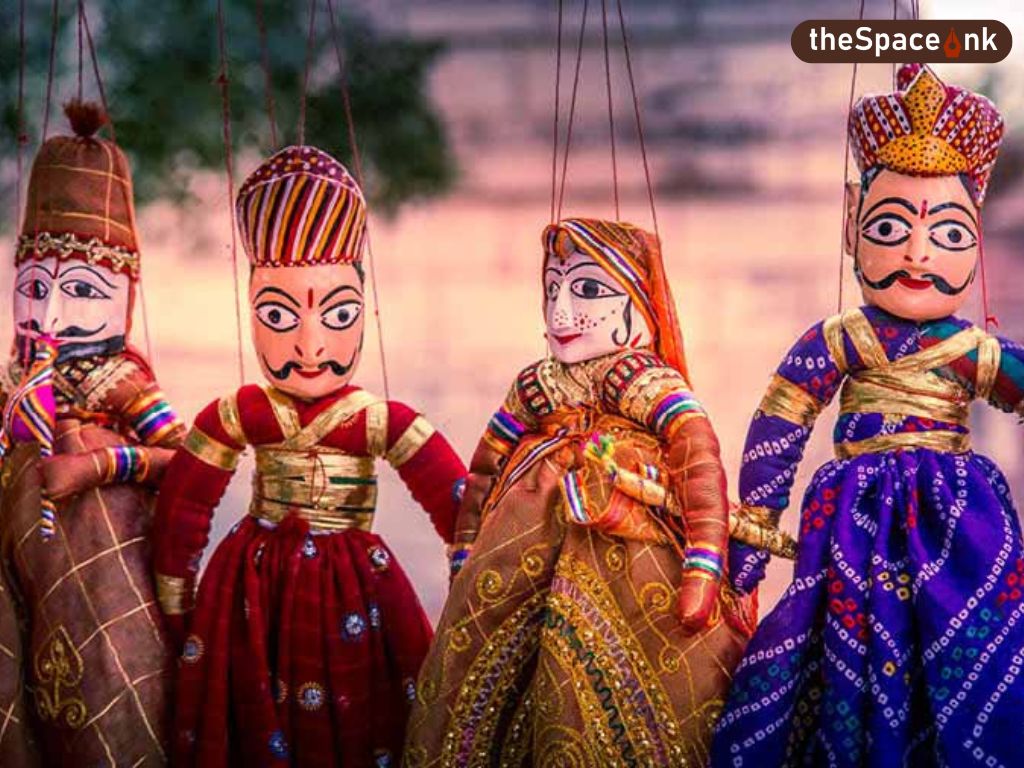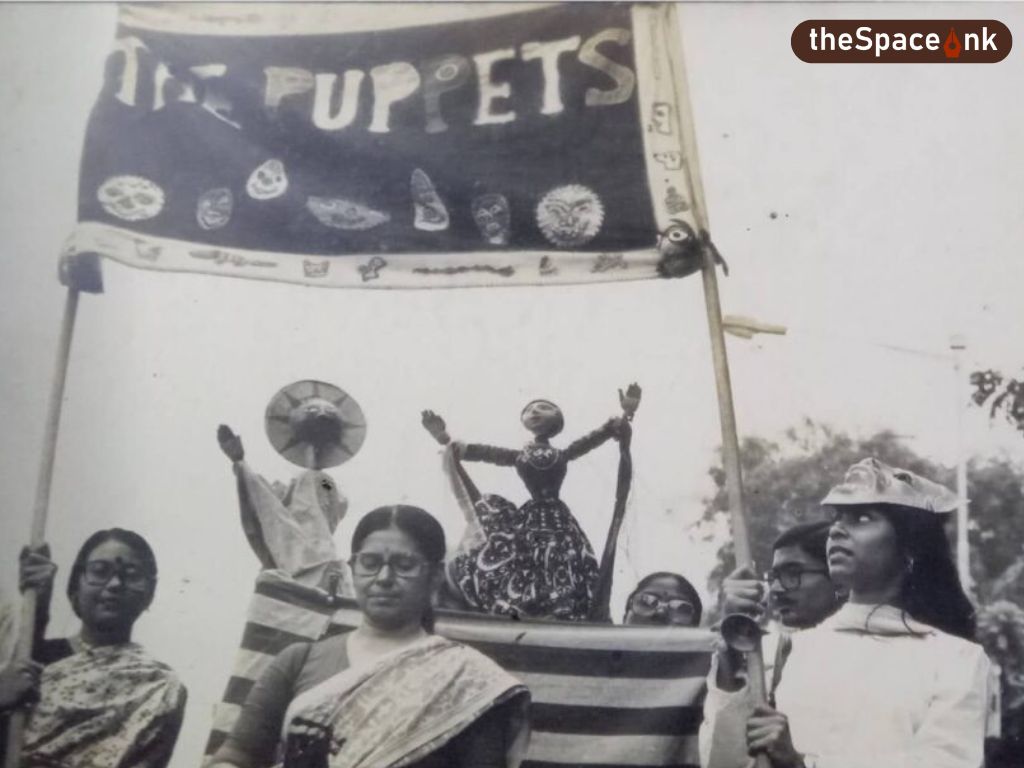Habib Tanvir is a name that will remain immortal in the annals of Indian theatre for the revolution he brought into the Indian stage. So, a “centenary tribute” is a mere token of remembrance, almost a formality. Habib Tanvir, one of the most popular Indian Hindi, Urdu playwrights, was a poet, a theatre director, and an actor. He is remembered by theatregoers in India through his famous Chhatisgarhi plays. The country will always recall this man as the founding father of folk contemporary theatre of India. He was born a hundred years ago, in September 1923, in Raipur.
He is regarded as the pioneer in breaking the rules of conventional, proscenium theatre to introduce folk forms and traditions into theatre. He believed and practiced that theatre of the people truly belonged to the villages and he succeeded in bringing this theatre to an urban, educated audience. The actors were a blend of folk performers of Chhatisgarh and urban actors. Tanvir and his wife Moneeka Misra founded Naya Theatre in 1959. During this stage of career, Tanvir’s interest in folk traditions and performers continued to grow. But, it was not until the early 1970s that this association reached a new and more sustained phase.
When he started his career, folk had not yet become the major occupation and interest in contemporary theatre scenarios. In fact, he can be regarded as the pioneer of the interest in folk forms and traditions of performance. His approach to folk culture distinguishes itself sharply from other contemporary theatres. It can be said that his approach and idea to the folk in particular and his cultural consciousness in general, was shaped in the crucible of the left wing cultural movement particularly IPTA (Indian People’s Theatre Association) and (Progressive Writers’ Association)[1]. As on the one hand, folk elements in the drama and on the other hand the revivalist and archaic kind of traditional theatre, Tanvir’s theatre offers an incisive blend of tradition and modernity, folk creativity and skill along with the medium critical consciousness[2]. The emergence of the new theatre had been prompted by the quest for identity and in search for the roots (Awasthi 2001:74). As a result of this encounter with the traditional theatre, several directors and playwrights started working with the mixed group of folk performers and urban actors, using the folk legends and community myths. Hence, these experiments gave birth to a new genre called Folkloric Theatre (ibid, 2001: 79). And this credit of eliminating the great divide between the modern- urban and the folk rural theatre goes to Habib Tanvir. Anjum Katyal[3] (2012) states that Tanvir’s career comprises intense theatrical commitment and activity, spanning the period of nationalistic fervor before the independence in the 1940s through the resistance to the violence of power politics in the 1990s along with the transportation of the folk theatre to the urban stage.
In 1959, Habib Tanvir founded Naya Theatre, a major milestone in his life. It was a hard time for him, the struggle to make the ends meet and at the same time continue his passion for theatre. In its first year, Naya Theatre produced three plays: Saat Paisey, a dramatisation of Czech short story, written by Habib Tanvir and directed by Moneeka Misra; Jaalidaar Pardey, Habib’s revival of an adaptation of a Soviet play he had first directed in 1952; and Phaansi, adapted from an English one- act play and first directed in 1960. This was a phase when Habib directed a series of plays in English such as Brecht’s The Good Person of Szechwan, Shakespeare’s The Taming of the Shrew, Garcia Lorca’s The Shoe-maker’s Prodigious Wife, Goldoni‟s Servant of Two Masters and Oscar Wilde’s Lady Windermere’s Fan and in 1964, The Signet Ring of Rakshasa, P. Lal’s transcreation of Vishakadatta’s Sanskrit classic Mudrarakshasa. The1970s began with the revival of Agra Bazaar played by Chattisgarhi actors. His interest in folk performance culture remained alive and he continued working with these actors, presenting a vast range of their culture.
The main object of his theatre was traditional folk theatre, for which he had organised different workshops on Nacha held in Raipur from 6-18 March 1973. Habib felt it as an exciting result in not only the villages of that region but at the same time in some of the metropolitan cities including Delhi, where the Chhattisgarhi dialect, a special form of Hindi is not at all spoken but hardly understood. Habib Tanvir gradually engaged himself in presenting a wide range of materials, from Indian and International classics to the social and political plays. But the basic principle for him and his theatre was too determined that Naya Theatre production would feature only the Chhattisgarhi actors performing in their mother tongue, live music, songs, dances and rituals utilising the minimal stage, lightings, designs and props. And these were the unique features that defined the theatre of Habib.
In Naya Theatre, the actors were expected to participate physically, mentally, emotionally and intellectually. Thus, they both shared a close relationship despite all odds and ups and downs of life. It was not a smooth path, several issues rose, plenty of wars and battles over it, as Habib Tanvir admitted but at the same time, there was care and mutual respect between and among them. During the five decades of his stint in theatre, Tanvir gave such memorable productions as Agra Bazar[1954], Mitti ki Gari[1958], Gaon ka Naam Sasural Mor Naam Damaad[1973], Charandas Chor (1975), Jis Lahore Ni Dekha (1990), and Rajrakt[2006], of which many are renowned as classics of the contemporary Indian stage.
‘Agra Bazar’ (1954), was based on the times of the 18th-century Urdu poet, Nazir Akbarabadi, an older poet in the generation of Mirza Ghalib. He used students of Jamia Millia Islamia, local residents and folk artists from Okhla village and created an ambience never seen before in Indian theatre. The play was not staged in a restricted space, but in a bazaar, a marketplace. Set in the early nineteenth century amid the bustle of a colorful street market in the iconic North Indian city, the play is woven together by the wonderfully human voice of the poet Nazir, which explores some of important cultural and socio-economic issues of the period, such as the declining influence of the Urdu language and the growing power of English in colonial India.
Charandas Chor (1975), Tanvir’s most famous work, is the story of a typical folk hero who robs the rich much in the style of Robin Hood and evades the law until he comes up against one wall he cannot scale—his own commitment to the truth. Charandas Chor, written by Vijaydan Detha and adapted into a play by Habib Tanvir. It is the story of a thief, Charandas. He is a habitual thief who is on the run from the police after stealing a gold plate. In a bid to outsmart the cops, Charandas enters a Guruji’s ashram and expresses his desire to become the latter’s disciple. Guruji agrees, but on the condition that Charandas takes a vow to always speak the truth. In jest, Charandas takes four vows — not to eat from a golden plate, not to ride an elephant in a convoy procession, never to marry a queen and become a king of a country. Soon he gets arrested for stealing 10 gold coins from the royal treasury. He confesses to the thievery but says he didn’t steal 10 coins but five. Charandas Chor offers an incisive blend of tradition and modernity, folk creativity and skills on the one hand and modern critical consciousness on the other. It is this as well as an enriching blend that makes his work so unique and memorable.
He also played cameo and character roles in Hindi films. One memorable role was in Sudhir Mishra’s Yeh Woh Manzil To Nahin, a politico-historical film. Others are Prahaar directed by Nana Patekar, Charandas Chor directed by Shyam Benegal based on Habib’s play, Mr. and Mrs. Iyer by Aparna Sen and Gandhi directed by Richard Attenborough.
His passing away on 8 June 2009 in Bhopal, his hometown after a three-week-long illness marks the end of innovative schools of pioneering actor-directors-innovators of Indian theatre such as Sisir Bhaduri, Utpal Dutt and Prithviraj Kapoor. He founded the Naya Theater in 1959, through which he created remarkable works drawing on the history and traditions of the tribal folk of Chhattisgarh.
Notes:
- Farewell to Habib Tanvir, Tehelka mag. Vol.6, Issue 24, June 20,2009 accessed on 22Sept, 2014 < http//. www.archieve.tehelka.com/story main 42 asp/ file name= hub 200609a- farewell.asp>
- Awasthi, Suresh. Performance Tradition in India., New Delhi: National Book Trust, 2001.
Habib Tanvir, Charandas Chor(Kolkata: Seagull Books, 1996; reprint 2004),p.64, translated by Anjum Katyal.
Source:
Habib Tanvir’s Naya Theatre: Towards the Revival of Folk Theatre by Sangeeta Mishra, Ph.D. Scholar Dept. of Modern Indian Languages and Literary Studies University of Delhil; the paper was published in Literary Journal, Vol. 3, Issue 1 (June 2017)
Shoma A. Chatterji is a freelance journalist, film scholar and author based in Kolkata. She has won the National Award twice, in 1991 and 2000. She has authored 26 published titles of which 14 are on different areas of Indian cinema. She holds two Masters Degrees and a Ph.D. in History (Indian Cinema). She has also won a few Lifetime Achievement Awards from different organizations over time.








